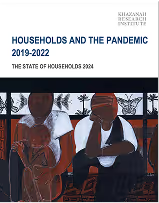


Article highlight

Promoting a more gender inclusive economy will be essential for Malaysia to successfully transform into a developed, modern economy.
Employment is one of the most important aspects of a modern economy. For households, it is not just a source of income, but also the principal means of participating meaningfully in society. For Malaysia, a healthy level of employment and job creation is central to fostering an equitable, inclusive, and sustainable economic growth. In this article and the next, we explore two topics that have important implications for the Malaysian employment landscape: women in the workforce and the impact of foreign workers.
The last decade has seen a rapid increase in the proportion of Malaysian women participating in the workforce. In 1995, 45% of Malaysian women between the age of 15 to 64 were in the workforce – meaning employed or actively seeking employment. By 2017, 54% of women were in the workforce. While this improvement is encouraging, it is still significantly lower than Malaysian men at 78%. Furthermore, it remains below developed countries such as Sweden, South Korea, and even Singapore, who have women participation rates of roughly 82%, 81%, and 69% respectively.
In broader measures of gender equality, Malaysia remains one of the worst in the world, especially alarming given our level of development. The World Economic Forum publishes a report on the gender gap yearly, which measures the relative gap between men and women across four key areas—health, education, economy and politics. In 2017, Malaysia ranked 104th out of 144 countries. No other countries in ASEAN was worse than us.
Gender equality is essential for Malaysia to successfully transition into a developed, modern economy. Not only is building an inclusive and equitable society an important goal, doing so can also contribute significant overall economic benefits.
The basic argument is that more women in the workforce will increase overall economic activity in the country. Our study finds that a 30 percent increase in female employment rates - a shift that will narrow but still not close the gender gap in workforce participation rates – will lead to an increase of gross domestic product (GDP) by about 7 to 12 percent. In 2017 terms, this would be equivalent to approximately RM95 to RM160 billion ringgit!
But the economic benefits go beyond greater GDP; in the long term, improving women’s participation in the economy can also help mitigate the potential economic slowdown from our ageing workforce, and accelerate our nation’s capacity for innovation.
The Malaysian population is ageing fast. Since 1965, Malaysia has been enjoying a ‘demographic window of opportunity’. This is when the working age population grows alongside the labour force. These simultaneous expansions create a conducive environment for sustained economic growth. However, with falling birth rates, this “demographic window” will be closed by 2020. Given the large gender gap in Malaysia, encouraging women to participate in the workforce can help keep this window open by supplementing our otherwise shrinking labour force.
Female empowerment is also increasingly important as we move towards an innovation-driven economy. Cross-country data shows robust evidence that gender equality matters for innovation. Countries with higher gender equality are more innovative – measured by output of innovation such as patents, creative outputs and high-tech exports – even after controlling for factors such as national income, population size, and infrastructure.
.png)
Source: Global Innovation Report and United Nations Human Development Report
Evidently, promoting gender equality matters for the Malaysian economy going forward. Leaving women out of the development equation is tantamount to squandering the efforts, voices, and ideas of half the Malaysian population.
To provide equitable access to the workforce, we must start by looking at the biggest barrier for women entering the workforce: domestic care work. 60% of all Malaysian women who chose not to join the workforce cite housework as the primary reason. In many cases, women face higher barriers to work than men not because they are less qualified, but because they shoulder a disproportionate amount of responsibility for domestic care work. Overcoming this would require a rebalancing of care work between men and women, and a greater commitment to creating more flexible working conditions across all industries.

Conclusion
Download Resources
Files
Attributes
Footnotes
References
Photography Credit
Related to this Publication
Related to
Inclusive & Sustainable Economic Development
Want more stories like these in your inbox?













